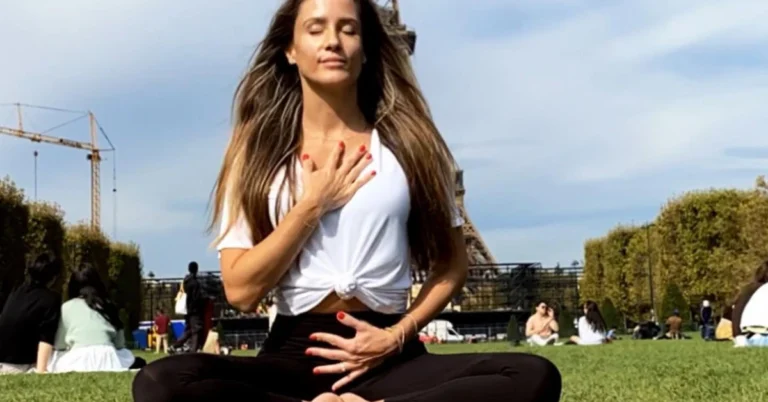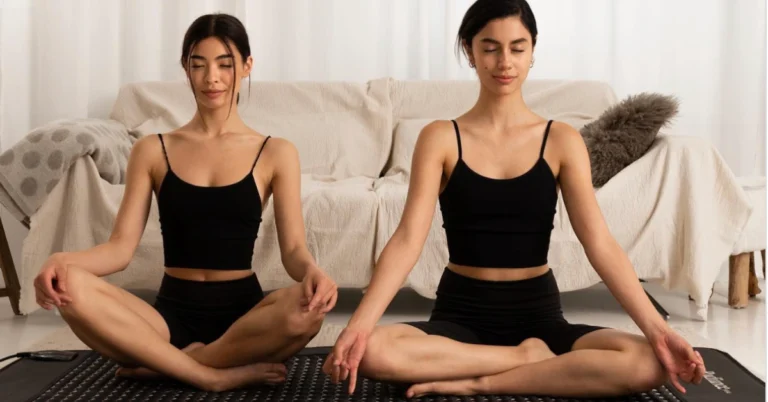Welcome to the world of SRF Guided Meditation! Discover the tranquility and clarity that Self-Realization Fellowship’s guided practices offer. Join us as we explore powerful techniques to calm the mind, nurture the soul, and unlock inner peace. Dive in and transform your meditation journey today.
Exploring SRF Guided Meditation
As a practitioner of SRF guided meditation, I have found it to be an incredibly powerful tool for achieving inner peace and spiritual growth. In this section, I will explore the origins of SRF and the philosophy behind SRF meditation.
Origins of SRF Guided Meditation
SRF, or Self-Realization Fellowship, was founded in 1920 by Paramahansa Yogananda, a spiritual teacher from India. Yogananda came to the United States in 1920 and spent the rest of his life spreading his teachings about the power of meditation and the importance of self-realization.
SRF was founded as a way to bring Yogananda’s teachings to a wider audience and to help people achieve a deeper understanding of themselves and their place in the universe. Today, SRF has centers and meditation groups all over the world, and its teachings have helped countless people find inner peace and spiritual fulfillment.
Philosophy Behind SRF Meditation
At the heart of SRF meditation is the belief that we are all spiritual beings, and that by quieting our minds and turning our attention inward, we can connect with the divine within us. SRF meditation is based on the ancient practice of Raja Yoga, which emphasizes the use of meditation to achieve self-realization.
In SRF meditation, we focus on a specific technique called “Hong-Sau”, which involves repeating the mantra “Hong” on the inhale and “Sau” on the exhale. This helps to quiet the mind and bring our attention inward, allowing us to connect with our true selves and the divine within us.
Getting Started with SRF Guided Meditation

If you’re new to SRF guided meditation, you may be wondering where to start. Here are a few tips to help you get started with your practice.
Finding the Right Environment
The environment you meditate in can have a big impact on the quality of your practice. It’s important to find a quiet, peaceful space where you won’t be disturbed. Ideally, you should be able to sit comfortably on the floor or in a chair with your back straight and your feet flat on the ground.
If you’re having trouble finding a suitable space at home, consider visiting a local meditation center. Self-Realization Fellowship has centers all over the world, and many of them offer group meditations and classes for beginners.
Essential Meditation Postures
There are a few key postures that are essential to a successful meditation practice. The first is the lotus position, which involves sitting cross-legged with your feet resting on your thighs. This posture helps to open up your energy channels and promote deep relaxation.
If you’re not comfortable sitting in the lotus position, you can also try sitting in a chair with your feet flat on the ground. Just make sure your back is straight and your shoulders are relaxed.
Breathing Techniques for Beginners
When you’re first starting out with meditation, it can be helpful to focus on your breath. One simple technique is to inhale deeply through your nose, hold the breath for a few seconds, and then exhale slowly through your mouth.
As you become more comfortable with this technique, you can experiment with other breathing exercises, such as alternate nostril breathing or the ujjayi breath. These techniques can help to calm the mind and promote deep relaxation.
Remember, the key to a successful meditation practice is consistency. Try to set aside a few minutes each day to meditate, and don’t get discouraged if your mind wanders or you have trouble staying focused. With time and practice, you’ll find that your meditation practice becomes easier and more rewarding.
SRF Guided Meditation Techniques

As a practitioner of Self-Realization Fellowship (SRF) meditation, I have found that the techniques taught by this organization are powerful tools for achieving inner peace and spiritual growth. Here are three of the most popular SRF meditation techniques:
Hong-Sau Technique
The Hong-Sau technique is a simple but effective meditation technique that involves focusing on the breath. By concentrating on the breath and mentally repeating the word “Hong” on the inhalation and “Sau” on the exhalation, the mind becomes calm and focused. This technique is especially useful for beginners, as it is easy to learn and can be practiced anywhere.
Aum Technique
The Aum technique is a more advanced meditation technique that involves focusing on the inner sound of “Aum.” By listening to the sound of Aum within, one can experience a deep sense of peace and spiritual connection. This technique is particularly powerful for those who are seeking to deepen their spiritual practice.
Kriya Yoga
Kriya Yoga is a more advanced meditation technique that involves a series of breathing exercises and visualization techniques. This technique is taught only to those who have completed the preliminary SRF meditation techniques, as it requires a certain level of spiritual development. Kriya Yoga is a powerful tool for achieving self-realization and spiritual growth.
Advanced SRF Guided Meditation Practices

As I continue to delve deeper into the teachings of Self-Realization Fellowship (SRF), I am excited to explore the advanced meditation practices that are available to students of the SRF Lessons. These practices are designed to help us overcome obstacles, expand our awareness, and achieve inner peace.
Overcoming Obstacles
One of the most powerful advanced meditation practices taught by SRF is Kriya Yoga. This technique involves a series of breathing exercises and mental concentration techniques that help to purify the body and mind. Through regular practice of Kriya Yoga, I have found that I am better able to overcome obstacles and challenges in my life. I am more focused, more centered, and more able to maintain a positive outlook even in difficult situations.
Expanding Awareness
Another advanced SRF meditation practice that I have found to be incredibly powerful is the technique of Hong-Sau. This practice involves focusing the mind on the breath, and gradually extending the length of each inhalation and exhalation. Through this practice, I have been able to expand my awareness and develop a deeper understanding of my own consciousness. I am more attuned to my inner thoughts and feelings, and more able to connect with the world around me in a meaningful way.
Achieving Inner Peace
Perhaps the most important benefit of advanced SRF meditation practices is the ability to achieve inner peace. Through regular practice of these techniques, I have found that I am able to cultivate a deep sense of calm and tranquility, even in the midst of a busy and chaotic world. I am more centered, more grounded, and more able to connect with the divine presence that resides within me.
Guided SRF Meditation Resources

As someone who practices SRF meditation, I know firsthand how helpful it can be to have access to a variety of resources to support your practice. Here are some of the best SRF meditation resources that I have found:
Books and Literature
There are several books and literature available from SRF that can help deepen your understanding and practice of meditation. One of my favorites is “Autobiography of a Yogi” by Paramahansa Yogananda. This book is a classic in the field of spiritual literature and has been inspiring readers for decades. Other great books from SRF include “The Science of Religion” and “The Second Coming of Christ.”
Audio and Video Guides
SRF also offers a variety of audio and video guides to help you with your meditation practice. One of the most popular resources is the “Guided Meditations” CD, which features several guided meditations led by SRF monastics. These meditations are a great way to deepen your practice and connect with the divine. Additionally, SRF offers a variety of online videos and audio recordings of talks by Paramahansa Yogananda and other SRF monastics.
Online Courses and Workshops
Finally, SRF offers a variety of online courses and workshops to help you deepen your practice and connect with other meditators. These courses cover a variety of topics, including meditation techniques, the teachings of Paramahansa Yogananda, and the principles of Kriya Yoga. Additionally, SRF offers several online workshops throughout the year, which provide an opportunity to connect with other meditators and receive guidance from SRF monastics.
So why not take advantage of these resources and deepen your practice today?
FAQ
What is SRF Guided Meditation, and how does it differ from other meditation practices?
SRF Guided Meditation, offered by the Self-Realization Fellowship (SRF), is a structured meditation practice based on the teachings of Paramahansa Yogananda. It differs from other meditation practices by focusing on specific techniques such as Kriya Yoga, which aims to accelerate spiritual growth and deepen one’s connection to the divine.
Who can benefit from SRF Guided Meditation, and is it suitable for beginners?
SRF Guided Meditation is suitable for individuals of all levels, including beginners. It provides a comprehensive approach to meditation that can benefit anyone seeking spiritual growth, inner peace, and a deeper understanding of themselves. The guided aspect makes it accessible for those new to meditation, offering clear instructions and support.
What techniques are included in SRF Guided Meditation, and how do they enhance the meditation experience?
SRF Guided Meditation includes techniques such as deep breathing exercises, concentration practices, and the use of affirmations and visualizations. These techniques help practitioners focus their minds, calm their thoughts, and connect more deeply with their inner selves and the divine, enhancing the overall meditation experience.
How often should one practice SRF Guided Meditation, and what benefits can they expect from consistent practice?
Regular practice of SRF Guided Meditation, ideally daily, is recommended to experience its full benefits. Consistent practice can lead to increased inner peace, enhanced spiritual awareness, improved mental clarity, and a greater sense of connection to the divine. Over time, practitioners may also experience personal transformation and a deeper understanding of life’s purpose.
If you liked this blog article about SRF Guided Meditation, don’t forget to follow us on Pinterest so you don’t miss any more meditation news!





